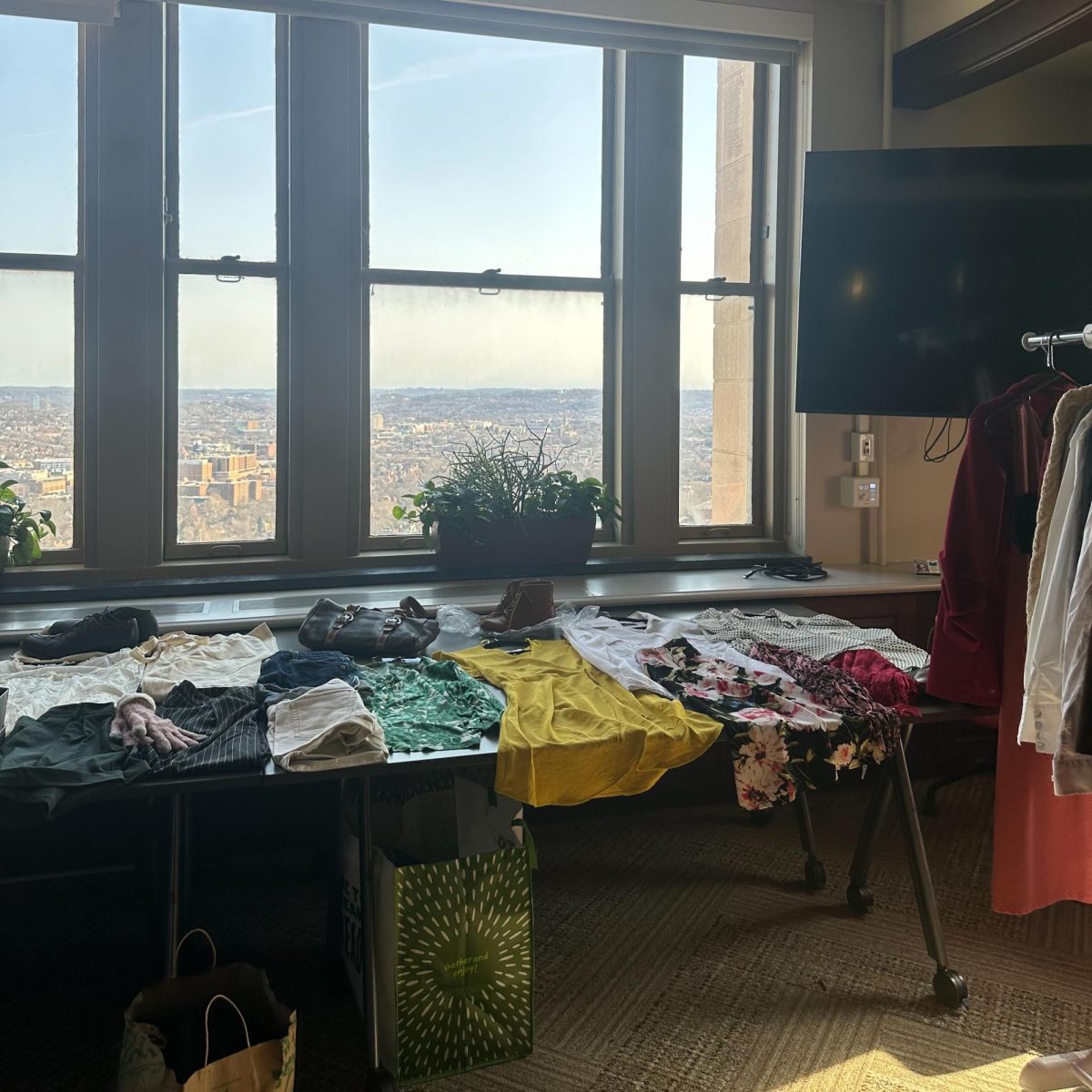CMU professor’s legacy reflected in new exhibit
March 21, 2011
“A Painter’s Legacy: The Students of Samuel Rosenberg”
Now… “A Painter’s Legacy: The Students of Samuel Rosenberg”
Now through April 30
Curated by Melissa Hiller
Fine Perlow Weis Gallery and Berger Gallery
Tickets free to the public
Most critics believe art endures long past its creator’s death. The American Jewish Museum of the Jewish Community Center of Greater Pittsburgh, however, isn’t interested in simply sustaining an artist’s work, but rather — at least in the case of Samuel Rosenberg — sustaining the memory of the artist himself.
Rosenberg was an artist who taught at Carnegie Mellon for about 50 years and instructed Andy Warhol. His death in 1972 has not tempered the reverence he attracted from his followers.
Melissa Hiller, the exhibition’s curator, spent almost two years contacting former students of Rosenberg in an attempt to piece together an exhibition honoring his contributions to the art world.
“He was a direct influence on four generations of [art] students,” Hiller said, noting that the professor’s influence manifested itself in a variety of ways. “Part of what was important to Rosenberg was that a good teacher doesn’t create a certain recognizable school of art. There isn’t any ‘Rosenbergian’ style. If there were, he would feel like he didn’t do his job.”
Many of the students that Rosenberg taught went on to have spirited art careers in remarkably disparate genres. Jane Haskell, for example, an artist featured in the show and a Pitt graduate, said that Rosenberg “freed me to do what I do.” Today she creates installation pieces and “lots of oil paintings.” Conversely, featured artist and former Rosenberg student George Nama works mostly in etchings.
Nama, who has served as a Pitt professor, said Rosenberg didn’t directly influence his art in a way that would be apparent to an observer, but instead impacted him in other ways.
“At the time, he taught everyone to be serious … It was a serious endeavor to be an artist,” he said.
By Hiller’s estimation, Rosenberg taught a number of students that’s “in the high hundreds” over the course of his 50-year career.
“What is difficult to say with words is that what made him so special to his students didn’t have so much to do with the number of students he taught but with the number of students that were such devoted students of Rosenberg,” Hiller said.
Hiller said all of the people Rosenberg taught who later became artists “claimed his very essence as a major influence on their lives.”
Indeed, the work of Rosenberg’s protegés underscores the durability of his teachings. Andy Warhol, for example, is now a 20th-century icon, revered as a pop-culture visionary. Many others experimented in post-World War II abstract expressionism — a nihilistic, anarchistic and rebellious genre.
Haskell and Nama added that Rosenberg not only helped develop their artistic abilities on an individual level but also had a singularly engaging class presence. Nama remembered that Rosenberg always came in a suit and tie and was “very genteel and serious.”
Haskell said that Rosenberg “proposed many experiments in class that taught me a great deal about painting.” He cited an exercise in which students would paint in all light colors or all dark colors. “He was a very philosophical man, and we had many great discussions in class.”
Rosenberg retired in 1963, so his still-living students are well into their 70s and 80s. The American Jewish Museum, Hiller said, has wanted to create an exhibition like this for 10 years.
On the surface, the exhibit is a collection of works by students who all studied under the same teacher. But according to Hiller, it can also serve as a demonstration of the effect a teacher can have on generations of students.


